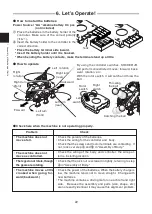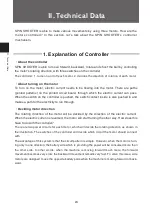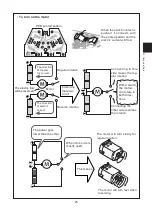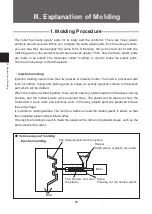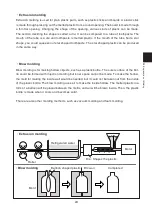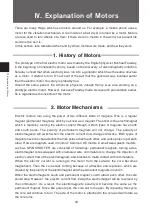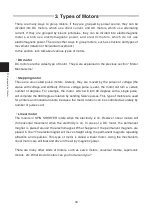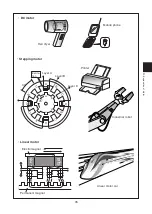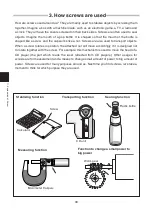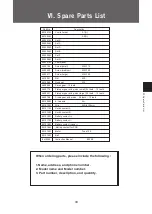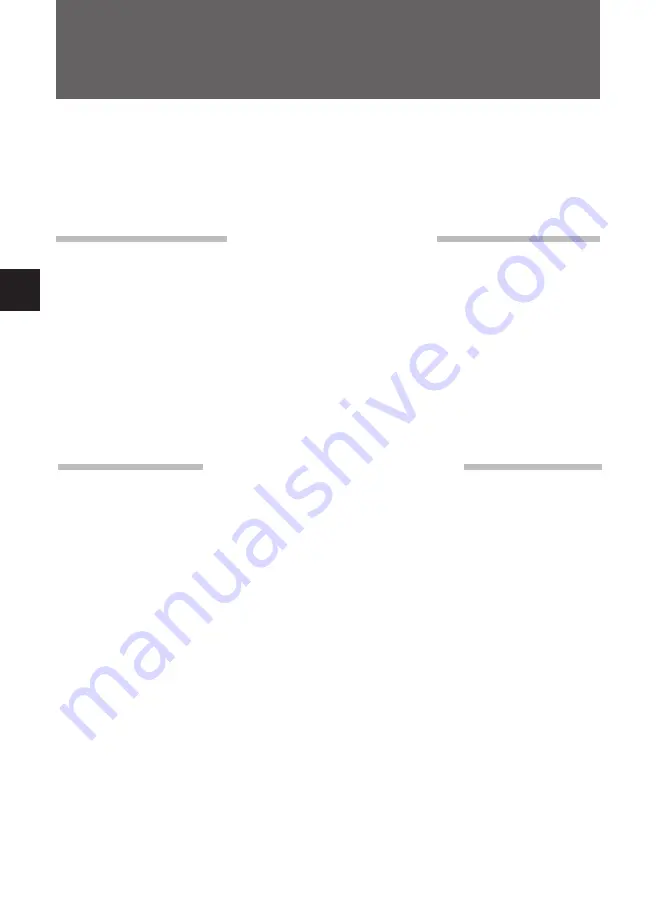
32
Ⅳ. Explanation of Motors
1. History of Motors
2. Motor Mechanisms
The prototype of the first electric motor was made by the English physicist, Michael Faraday,
in the beginning of nineteenth century, based on the discovery of electromagnetic induction.
Faraday noticed that when electricity was run into a generator which has the same structure
as a motor, it started to turn. On account of the fact that the generator was invented earlier
than the electric motor, this story is probably true.
Around the same period, the American physicist, Joseph Henry, was also working on a
prototype electric motor. However, because Faraday made his research presentation earlier,
he is regarded as the inventor of the motor.
There are many things which use motors around us. For example, a mobile phone uses a
motor for the vibration mechanism. A fan inside of a hair dryer is turned by a motor. Motors
are also used to turn wheels of a train. If there were no motors in the world, our present life
would not be as it is.
In this section, let’s talk about when and by whom motors were made, and how they work.
Electric motors turn using the power of two different kinds of magnets. One is a regular
magnet (permanent magnets), which you know as a magnet. The other is the electromagnet
which is made by running the electric current through it. Both types of magnets have north
and south poles. The polarity of permanent magnets will not change; The polarity of
electromagnets will switch when the electric current flow changes direction. Both types of
magnets have the characteristic that like poles attract each other, and unlike poles repel each
other. How are magnets used in motors? Common DC motors in small sized plastic models ,
such as SPIN SHOOTER, are consisted of followings: permanent magnets, turning axles,
electromagnet cores wrapped with enameled wire, commutators to change the direction of
electric current flow of the electromagnets, and brushes to make contact with commutators.
When the electric current is running to the motor from the outside, the core becomes
magnetized. Then the core starts turning because of attraction and repulsion, which are
created by the polarity of the electromagnet and the permanent magnets around it.
When the electromagnet’s south and permanent magnet’s north attract each other, the core
would stop. However, the electric current flow inside the electromagnet will be reversed by
the commutator. As a result, the electromagnet’s polarity will become the same as the
permanent magnet. Since like poles repel, the core will turn again. By repeating this cycle,
the core will continue to turn. The axle of the motor is attached to the core and will rotate as
the core turns.
Ⅳ
.
E
x
p
la
n
a
tio
n
o
f M
o
to
r





